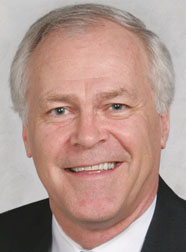The 2012 Workers’ Compensation marketplace ended almost a decade of relative calm in which many employers experienced decreased work comp costs and fierce competition for their business. As the cycle continues to reverse and costs increase, many employers are worried about their 2013 premiums. The “2013 Marketplace Realities” report from Willis Group Holdings P.L.C. projects Workers’ Comp rates to increase 2.5% to 7.5% with increases of up to 20% in California.
Historically, Workers’ Comp pricing is cyclical; therefore, indications are that increasing costs will continue for four to five years. To minimize the impact of the market shift, employers should understand the market forces driving the changes, how they impact their Workers’ Comp program and what they can do. There are four major factors propelling higher costs:
• Insurance companies, wanting to gain market share during a troubled economy, delayed increases even as their costs rose. They have paid out more in claims costs than they have taken in from premiums and low investment yields have not offset the underwriting losses. To return to profitability, insurance companies are raising premiums, reducing policy offerings and tightening underwriting standards, taking a particularly hard look at risks.
• Workers’ Compensation rates continue to be driven by medical costs that rise faster than inflation and often faster than medical costs outside the Workers’ Comp system. Rampant narcotic abuse has also exacerbated the problem.
• The National Council on Compensation Insurance (NCCI), which sets the standards for calculating Experience Modification Factors (Mods) used to determine Workers’ Comp costs, revised its standards significantly for the first time in decades. The three-year process that will commence on January 1, 2013 will change how Workers’ Compensation insurance providers calculate the Mod, which will affect premium rates for many buyers in states that use NCCI calculated Mods.
• Rising rates could be compounded by rising payroll in a recovering economy.
Employers with a keen grasp of Workers’ Comp premiums understand that “shopping” for a better rate is not the answer. Unlike most other insurance, Workers’ Comp functions like a Line of Credit. Use it and you will pay back the cost of the injuries plus more; in fact, employers will pay back two to three dollars to the insurance company for every dollar the insurance company pays in claims costs. In most states, an experience rating or Mod, an actuarially based method of determining whether your company’s losses (injury claims) are better or worse than expected, is used in calculating the premium.
Since the formula evaluates the company’s losses over three consecutive policy years, not including the most recent year, the 2013 Mod will use data from 2009, 2010 and 2011. Six months prior to the policy expiration date, the insurance company will submit data about the company’s claims during the previous policy year. If your renewal date is January 1, your Mod for 2013 is already determined. However, actively reducing your Mod today will reap reductions in Workers’ Compensation insurance premiums tomorrow.
While there are administrative steps that can be taken to tighten up costs, implementing safety measures and practices that reduce claims are the game changers regardless of industry or rate environment. Simply put, those employers who have a history of claims will incur greater costs than average. And it’s not just large claims. Frequency is a greater driver of costs than severity. Controlling Workers’ Comp is an ongoing business practice that should be consistent in hard and soft markets. If a company has a good claims record, it is going to be impacted the least when premiums increase.
by J. Scott Nelson
402.434.7205
UNICO Group, Inc
www.unicogroup.com

